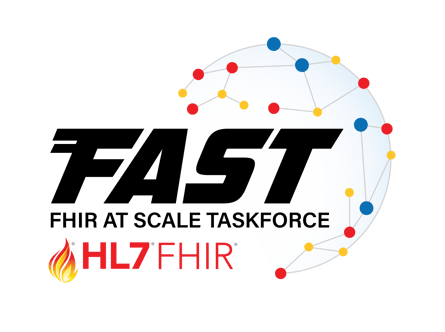
In a recent episode of HIMSSTV, two healthcare interoperability visionaries, Deepak Sadagopan and Duncan Weatherston, took the virtual stage to share their expert insights on the critical FHIR pathway within the Trusted Exchange Framework and Common Agreement (TEFCA) model. This captivating discussion was led by the co-chairs of the HL7 FHIR at Scale Taskforce (FAST), and it shed light on the transformative potential of FHIR in shaping the future of healthcare data exchange.
Meet the FAST Community
Before we dive into the interview, let's take a moment to acquaint ourselves with the remarkable work being done by the FAST community. The HL7 FHIR at Scale Taskforce is a dedicated group committed to identifying scalability challenges and defining solutions to overcome the barriers to broad FHIR adoption. FAST is addressing key areas like Security for Scalable Registration, Authorization, and Authentication and Interoperable Digital Identity and Patient Matching. The FAST community’s list of projects can be found on the FAST Confluence Project Page. An upcoming project on Consent is set to kick off soon, promising exciting prospects for healthcare data sharing. To get involved, reach out to fast@hl7.org.
Unlocking the Power of TEFCA
The interview's central focus was to unravel FAST's perspective on the Trusted Exchange Framework and Common Agreement (TEFCA). TEFCA's grand mission is to establish a nationwide foundation for healthcare data interoperability, ensuring that essential clinical information can be securely shared among different healthcare networks, regardless of their affiliations. The Common Agreement serves as the governing framework for exchange, underpinned by universally accepted expectations and rules. TEFCA aspires to create a common floor and to foster trust among Health Information Networks (HINs) with its non-binding, foundational principles.
During the HIMSSTV discussion, Deepak Sadagopan and Duncan Weatherston passionately advocated for FHIR's pivotal role in the TEFCA model. While they lauded TEFCA's overarching vision, they also expressed concerns that it might inadvertently introduce variations that could hinder, rather than promote, interoperability. The healthcare industry is unmistakably heading in FHIR's direction, as FHIR is named in various policies. The FAST co-chairs believe that the current TEFCA FHIR Roadmap might be playing it safe and not planning for the widespread FHIR adoption and innovation that will take place over the next 3-4 years, leading to unwanted variation in the meantime.
Incentives and Standards: The Dynamic Duo
Another engaging topic explored during the interview was the use of "sticks and carrots" in healthcare policy to expedite FHIR adoption. Duncan Weatherston emphasized that incentives can be powerful tools to drive change and traction within the healthcare ecosystem. Deepak Sadagopan concurred, highlighting the need for a robust framework of standards to generate a "flywheel effect" that would set FHIR adoption into motion.
A Vision for Healthcare Transformation
The appearance of Deepak Sadagopan and Duncan Weatherston on HIMSSTV offered a unique opportunity to illuminate the essential role of FHIR in advancing the TEFCA model and, more broadly, healthcare interoperability. Their insights underscored how FHIR is poised to revolutionize data exchange, with patients at the forefront of their healthcare experience. In a world where seamless and secure data exchange is becoming increasingly vital, FHIR stands as a cornerstone for achieving this transformation.
You can catch the entire, thought-provoking discussion on the FHIR pathway in the TEFCA model on HIMSSTV here. Don't miss this chance to delve deeper into the future of healthcare interoperability and discover the pivotal role that FHIR plays in shaping it, explore the work FAST is doing and how you can get involved by visiting the FAST confluence home page or reaching out to fast@hl7.org.


